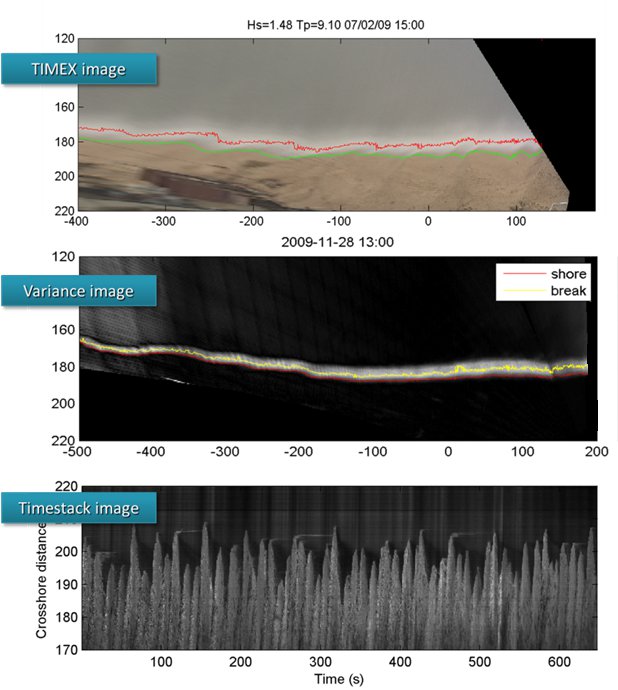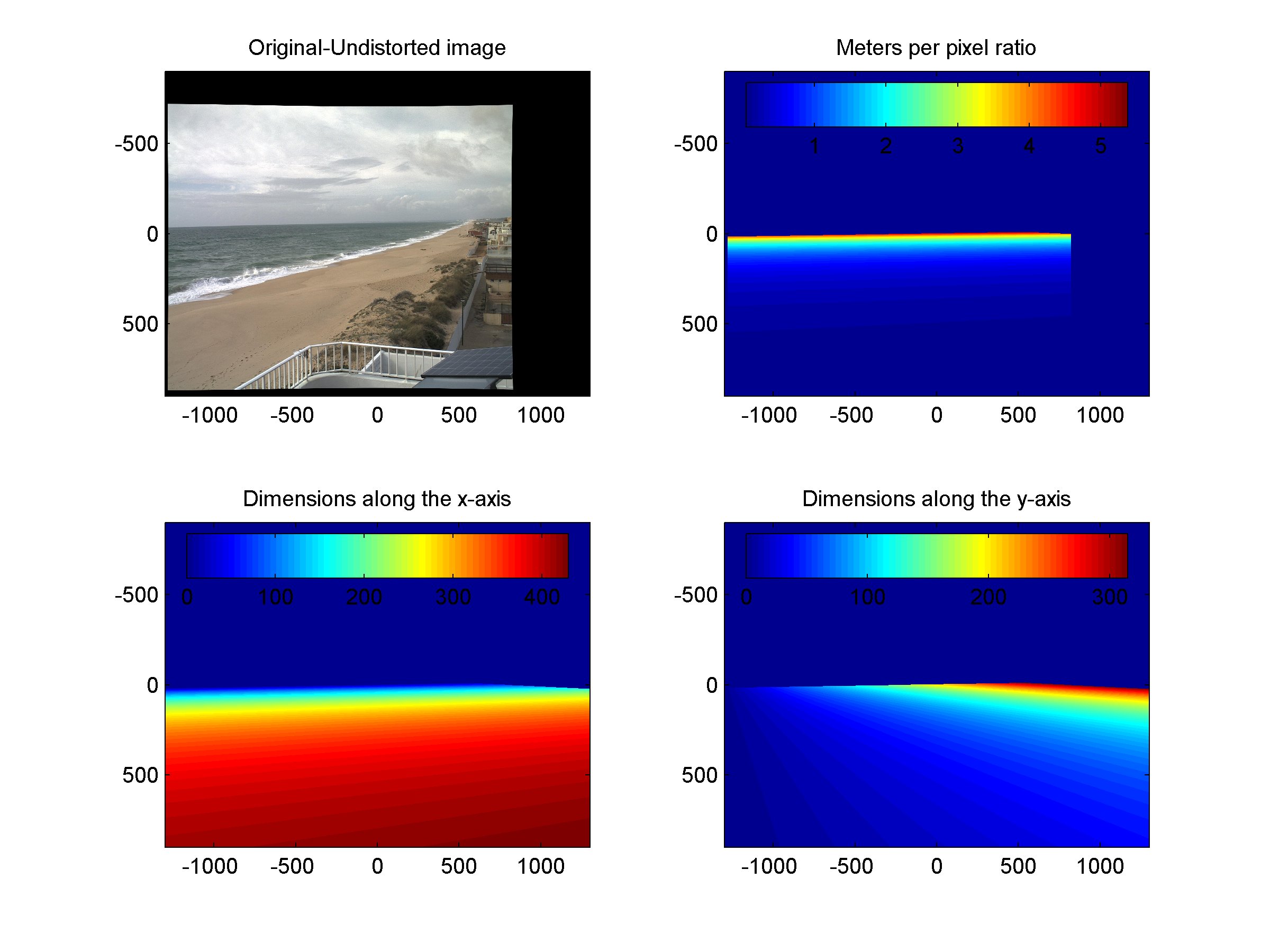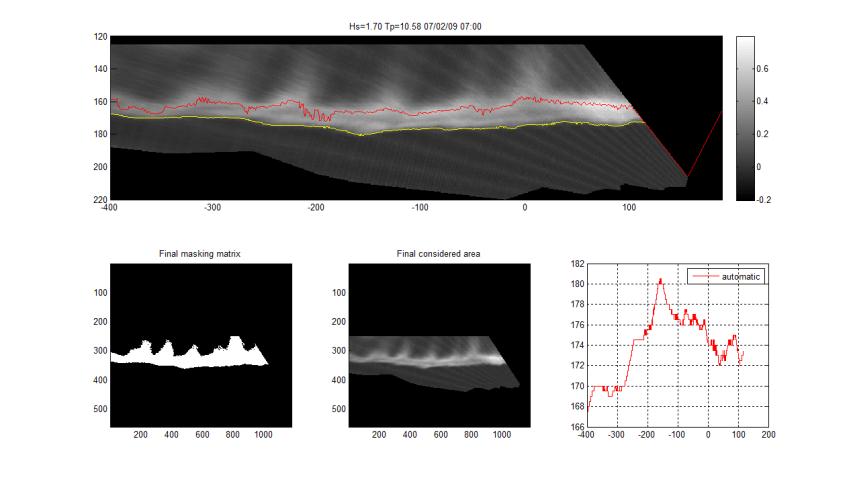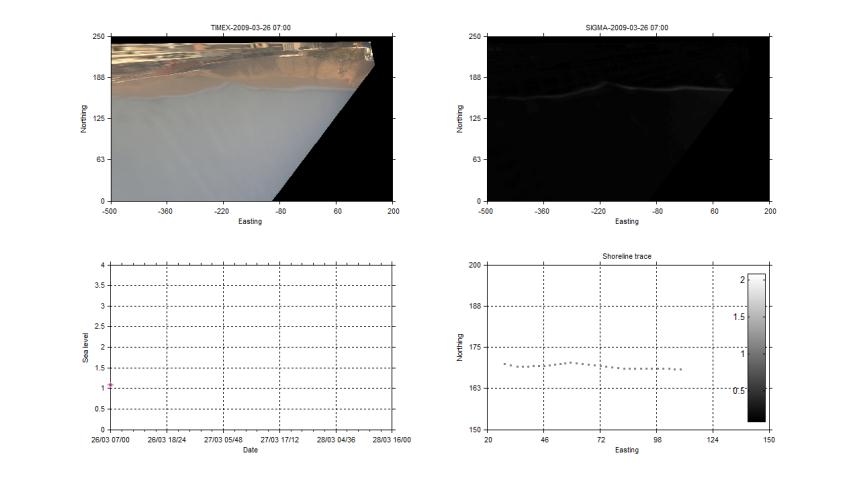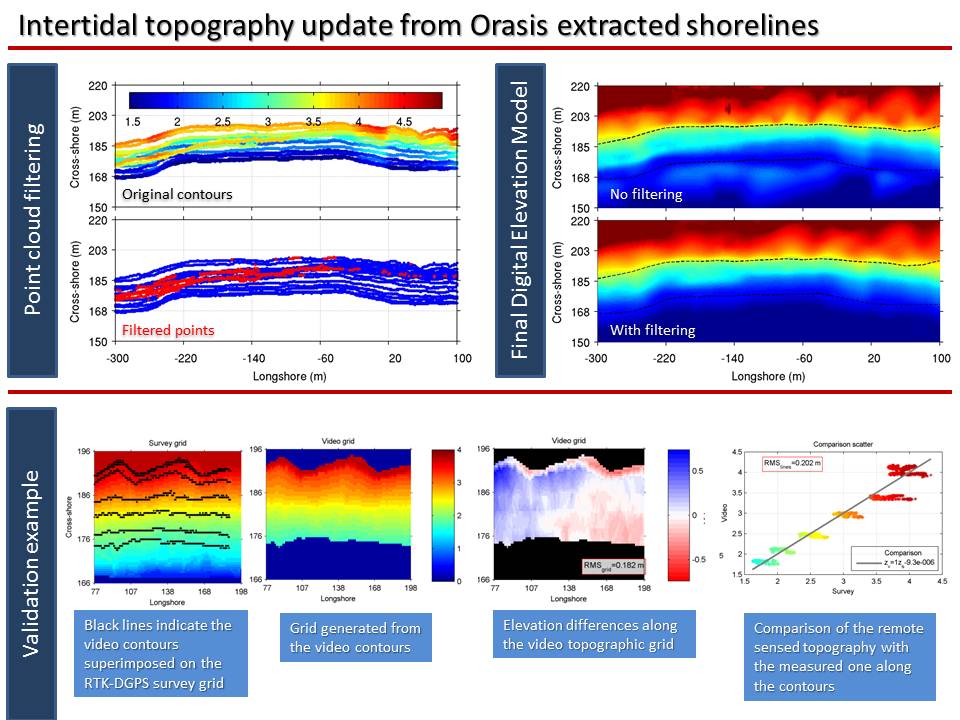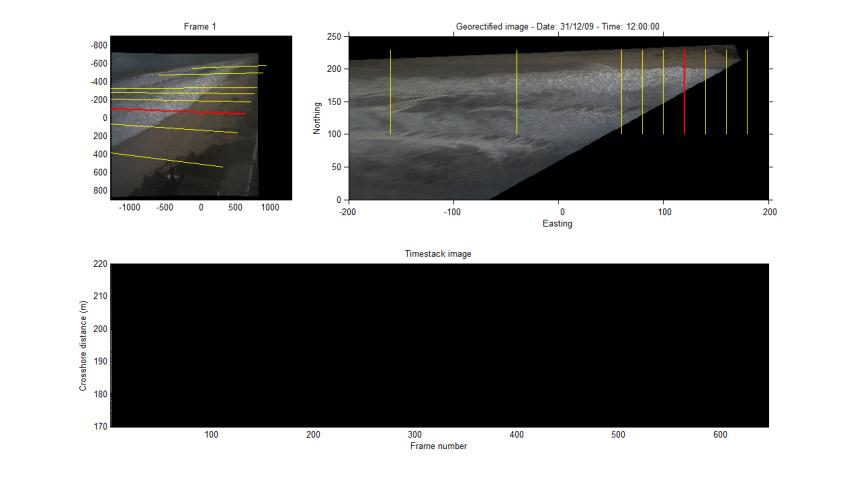A Coastal Video Monitoring system typically consists of one or more video cameras, connected to a computer acquiring coastal imagery 10 min every hour during daylight, with an acquisition frequency of 1-4 Hz. Images are processed to generate the system's 'basic products'. i.e. time-averaged, variance, snapshot and timestack images, which are all projected in geographic coordinates using standard photogrammetric techniques. Following, a set of post-processing tools allows monitoring the intertidal topography, nearshore bar and shoreline position, as well as swash motions, on a daily basis.
Basic products
Images are processed to generate the system's 'basic products'. i.e. time-averaged, variance, snapshot and timstack images.
